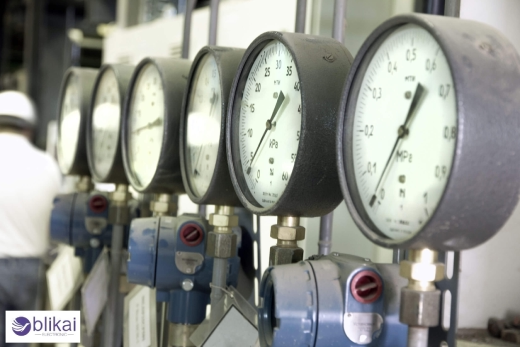PSIA to MPA: Best Tool for You (Blikai)
There are a lot of factors to consider when reading pressure. You have to keep your eye on both systems, imperial and metric, when you're switching between them. Are there any common switches? PSIA to MPa. It is the absolute equivalent of pounds per square inch, while MPa is the metric equivalent of megapascals. The sensors are used in a variety of applications, including HVAC systems and industrial gauges. But mixing them up? Yeah, that's a bad idea. It is therefore critical that you understand how to convert PSIA to MPa. It won't matter if you are a student, an engineer, or you just want to fix your pressure regulator with this guide. It's that simple. It's fast. This is accurate.

What is PSIA?
A PSIA is an abbreviation for Pounds per Square Inch Absolute. The unit is used to measure the total pressure exerted, which includes atmospheric pressure. The dial does not tell you everything. In other words, it's a combination of gauge pressure and atmospheric pressure (usually around 14 psi at sea level). Despite your gauge showing 0 psi, the PSIA is still 14.7%. Why is that? We are still surrounded by air.
Measurements of this type are important in scientific calculations and vacuum systems. This gives you an absolute reference that is not affected by the weather or altitude. A perfect vacuum is the anchor for PSIA, as opposed to PSIG, which is zeroed out at atmospheric pressure. Think of it as a ground-up measurement, not a first-floor measurement. A cleaner, more precise result. There are no surprises.
What is MPa?
The term MPa refers to megapascal. It measures pressure in metric units, and its equivalent is 1 million pascals (Pa). It corresponds to 145.038 pounds per square inch. That's one MPa, right? Those are a lot of pressures. It's a favorite among engineers. Using SI (International System of Units) makes it clean, scalable, and easy to use. There are no weird conversions. You won't have to guess back and forth.
There are many heavy-duty fields where MPa is used, such as hydraulics, structural engineering, automobile systems, even tire ratings. A product that says "rated to 5 MPa" means it's built to handle serious pressure. Whenever accuracy and high value are essential, this is the tool to use. You won't find any fluff here—just raw pressure. Powerful and straightforward.
PSIA to MPa Conversion Formula
PSIA to MPa conversion doesn't take rocket science, but it requires precision. There is a simple formula at the core:
MPa = PSIA × 0.00689476
What is that constant? Psi (absolute) becomes megapascal with this formula. You can use 0.00689476 to convert PSIA to MPa if you have a pressure reading in PSIA. Can you give me an example of 100 PSIA? By multiplying that by the constant, you get 0.689 MPa. A clean and quick process.
Industries that use mixed systems, such as oil and gas, aerospace, or HVAC, need to know this formula. There may be sensors that read in PSIA and others that read in MPa. It is important that you have that bridge. What is this formula? Those are the words you need to translate. However, make sure you double-check your measurements. Due to the use of PSIG rather than PSIA? It's a completely different story.
Applications
Industrial Pressure Systems
Many industrial environments—such as hydraulics, pneumatics, and fluid control systems—use PSIA to read pressure sensors. In international design specifications or documentation, MPa may be used. Engineers regularly convert between safe and optimal limits to ensure everything remains within safe limits. In the case of a misread, underperformance or even a dangerous failure can result. Because of this, this conversion goes beyond math: it's safe.
Oil and Gas Industry
This field is constantly faced with clashes between measurement systems. PSIA is often used on U.S. equipment, while MPa is more common on European or Asian equipment. A consistent approach is essential when it comes to managing pipeline pressures or drilling depths. Engineers from all around the world are able to work together on infrastructure projects when they convert between PSIA and MPa.
Aerospace Applications
The aircraft cabin pressurization system, fuel management system, and environmental control system function under absolute pressure. That’s PSIA territory. Is there a global aviation standard? Many lean on MPa. Thus, aerospace engineers are accustomed to switching between PSIA and MPa when analyzing or simulating pressure changes during flight. There is a lot of precision work involved, and small errors can have serious consequences.
HVAC and Refrigeration Systems
Pressure is often measured by gauges in PSIA systems in heating, ventilation, and air conditioning systems. It is necessary for technicians to convert values into MPa if the documentation or compliance checks require SI units. International or commercial systems are particularly prone to this. Diagnostics and maintenance can be affected if conversions are not accurate.
Final Thoughts
There may seem like a small detail when converting PSIA to MPa, but it is not. A safety engineer bridges the gap between systems, standards, and standards in the real world. Is there a mistake? The situation can quickly turn sour. If you understand this conversion, you'll be able to work on jet engines, pressure valves, or just check HVAC statistics. Clear and concise. There is no guesswork. This ensures the accuracy of the results and the tightness of the data.
Impact of IRF3205 MOSFET on Power Electronics: Advancements and Applications
OPA2134 vs NE5532: A Comparison of Performance, Features, and Applications
What is an LM324 IC Comparator?
Comparing 18650 and 21700 Batteries: What Sets Them Apart?
Comparing STM32L vs STM32F Series: Differences and Applications
What TLV3201AQDCKRQ1 Voltage Comparator is and How It works
CR2016 vs. CR2032: A Comparison of Coin Cell Batteries
Digital Comparator and Magnitude Comparator Guide
PCM5242 vs ESS: Comparing Audio Performance and Features
Will a CR2032 Battery Work for CR2016? [Compatibility Guide]










